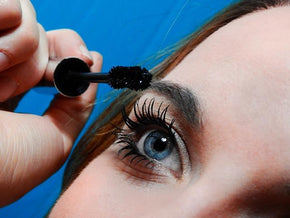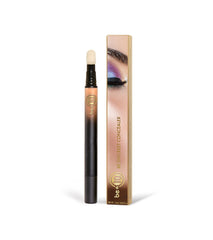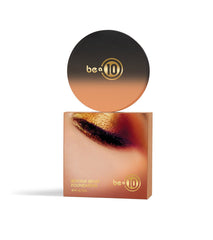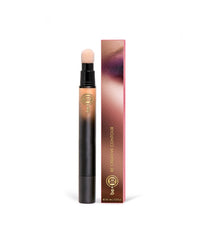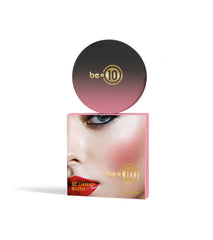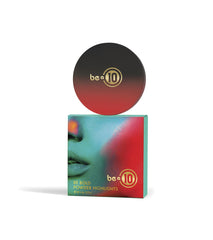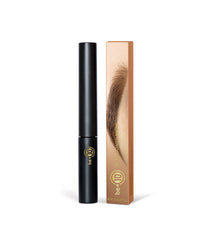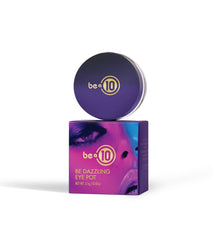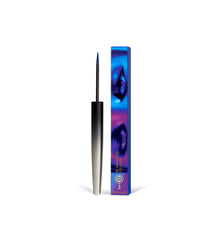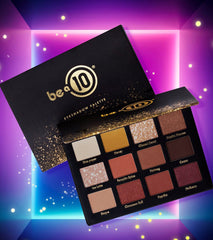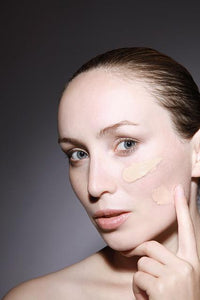With the beauty counter stocked up with all types of primers, foundations, concealers, and BB creams, it could be confusing, especially for a newcomer in the makeup game, as to which products are essential.
Well, I could write poems about the importance of each, despite my internal belief that every woman knows what works for her face best. But I have seen many people making the fatal mistake of skipping primer that I couldn’t help but ask why. And all I got in return were questions like, “what is face primer?” “What is a primer for?” And “what is a primer used for?”
Out of all makeup products out there, the primer seems to be the most puzzling one. Since it doesn’t directly affect your final look, some may think it’s okay to bounce over this step and go directly to the fun part. But just like painting a canvas or putting on nail polish, a priming coat is necessary, and let me tell you why!
What Is Primer?
Ever washed your face or cleaned it with a cleanser then applied makeup? Well, I’m sure you didn’t like the cakey and patchy result. The makeup primer is the beauty brands’ idea of solving this problem.
The primer comes in the form of light, non-colored, serum-like creams or gels that you can use to moisturize and enhance your skin texture before applying foundation and concealer. It sits between your skin and the product you’re laying on your face, whether it’s on your cheeks, lashes, lips, or your face in general.
So why is it an important step that makeup artists advise strongly against skipping? After all, a good skincare routine can help keep your skin moisturized and ready to take all the beauty creams and powders, right? Well, not exactly.
A primer is more than just a moisturizing cream. In addition to making your face smoother, it fills in the pores, hides blemishes, reduces the visibility of spots and flaky patches, and above all, evens out your skin so that your makeup doesn’t look bumpy or crepey—all that without changing your skin color or tone.
Apart from the better finish it offers, a primer helps make makeup application easier. Imagine gliding cream on a smooth canvas and a rough one, which would ensure easier application and better results? The smoother one, of course. That’s what a primer does to your face.
Moreover, it helps keep the powders and other products you apply in place for a longer time so that you can enjoy feeling like Beyoncé throughout the whole day, particularly on hot days when they have a habit of sliding off.
What Does Makeup Primer Do?
So the real question is: what does primer do for makeup? Well, that boils down to the type of primer you choose. All primers do what I’ve mentioned before, from smoothing, moisturizing, and preparing the skin.
However, makeup brands have taken the extra mile to make your face happier by creating primers that combine other jobs, too, like brightening, mattifying, color-correcting the skin, as well as blurring dermatic issues such as wrinkles, acne, and large pores.
Some go as far as offering an effect similar to temporary facelifting, the cosmetic surgery that would require you to shell a lot of cash to get.
So, what does face primer do? There are five types for that:
Shiny: From its name, a shiny or illuminating primer adds a more lit-from-within glow to the skin of your face with the help of the luminescent particles in the formula. This type can be worn on its own or with full makeup. It’s also very useful for brightening aging and dehydrated skin. Not to mention, it’s the smart choice for glimmering makeup for night outs.
-
Shine-free: This is the opposite of the previous type. For oily skins and those who tend to sweat a lot, an illuminating primer would make things worse, resulting in a dewy finish. On the other hand, mattifying or shine-free primers can minimize shine, blur the appearance of pores, and hydrate the skin, all while offering a non-clogging base.
-
Hydrating: If you have dry or flaky skin, you’ll notice that your makeup tends to crack after a few hours of applying it. Hydrating primers contain nourishing ingredients that keep the skin hydrated, doubling as makeup boosters and hydrating creams.
-
Color-correcting: Who doesn’t suffer from colored patches on their skin? Well, except for J.Lo and two or three blessed individuals on this planet! Color-correcting primers have tinted formulas that work to contrast or neutralize the colored spots on your face. For example, if you have a warm skin tone that looks red most of the time, a green primer offsets this redness. On the contrary, a blue one helps knock out yellowish spots.
-
Blurring: This type acts as a skin smoother, just like how a photo filter would do to your skin. It works to cover large pores, reduce the appearance of wrinkles, and even out the skin tone and texture, allowing for a more straightforward application of makeup.
All of the previous types cover places like the cheeks, forehead, and chin. So what about the spots they don’t reach, like the lashes, eyelids, and lips? There is a primer type for each of these, so let’s see what they do.
What does lash primer do?
Lash primers are formulated with extra nutrients to ensure thicker and fuller lashes. They make applying mascara easier by giving your lashes an extra boost of volume and curl.
In addition to the nourishing factor, they provide a base, which holds the mascara well, preventing it from smudging and slipping off, things that not even waterproof and long-wearing products prevent.
What does eyelid primer do?
Eyeshadow and eyeliner tend to be the hardest parts of makeup to stick around the whole day. And even if they manage to linger on your eyelids, you’re not safe from the smudges and creases that leave you with raccoon eyes due to humidity and reaching for your eyes by accident throughout the day.
An eyelid primer is a good solution for such problems. It provides a sticky coat for the eye makeup to hang on and prevents unnecessary fading and smudging.
What does lip primer do?
If you’re not a fan of making an excuse to go to the toilet and fix your lipstick every couple of hours, then you need a lip primer. Apart from allowing your lipstick to stay put for longer and preventing it from bleeding, lip primers can give you this plumped-up, fuller pout look that we all seek.
How to Choose a Makeup Primer?
As you can see, the types of makeup primer on the market are endless, and that’s even without talking about the brands. Whether your skin is dry, oily, or suffers from colored patches or acne, you can choose a suitable one from the types mentioned above.
However, to make a better decision, you should keep factors like the ingredients and type of formula in mind too. My mission here is to make you an expert, not just someone who trusts what the bottle says on the front, so let’s talk more about the base of these formulae.
In general, primers are either silicone-based or water-based. This isn’t going to be stated clearly on the package most of the time, but a quick glance at the ingredients will give you an idea about the type.
If you find the words “silicone,” “silicate,” “siloxane,” or “methicone” in the ingredient list, you’re holding a silicone-based primer. A water-based primer would be the one that doesn’t have any of these constituents. Also, most of the time, you’ll find “water” as the first ingredient.
Silicone-based primers are the most popular as they add an extra-smooth texture and act as a shield on the skin, keeping its natural oils in. That’s why they’re perfect for almost all skin types, except for sensitive, acne-prone, and too-oily skins.
On the other hand, water-based primers are light and don’t really do anything more than providing a base for makeup to stick on. Although practicality-wise, silicon-based formulae are better, water-based ones are more suitable for sensitive and oily skins as they don’t clog the pores and irritate the skin.
You probably know which category your skin falls in. If you don’t, a simple solution would be to try applying oil-based and water-based cream on different parts of your face and see how your face reacts after a few hours.
If the part with oil-based cream looks cracked and flaky while the one with oil-based cream looks good, you have dry skin. On the contrary, if the part with water-based cream melts off your face, you have oily skin. Finally, if the oil-based cream triggers redness in your face, you have sensitive skin.
Just keep in mind that for optimum results, whichever type of primer you choose, you have to select a foundation of the same kind. That means if your primer is silicone-based, your foundation should be silicone-based and vice versa.
How to Apply Primer?
By now, you must be asking, “how to use a primer?” That depends on the area you’re applying it on, but since I’m here to help you reach that perfect holiday glam, I’m going to give you a few tips for each type.
How to use face primer
No! You don’t just glide it on your face. First, begin with cleaning your face to ensure maximum benefit from the primer, then apply your favorite moisturizer.
Let it settle for a few minutes, then take a nickel-size amount of the primer and begin dapping (not gliding) it with your finger or beauty blender on the center of your face. Then, continue to your forehead, chin, and sides of your face.
After finishing, give it a couple of minutes to sink in, then apply your foundation and the rest of your makeup.
Note that applying foundation right after the primer without giving it time to get absorbed will cause the mixture of creams to melt on your face. Also, using too much primer will have adverse effects unless you have too dry skin.
How to apply eyeshadow primer
The trick here is to use something that can reach this tight area. While it’s okay to apply primer on your face with your fingers, I prefer using a brush when applying it on my eyelids, especially if it’s a color-correcting one, to avoid making a mess.
Just follow the same rules, and don’t forget to blend it well to avoid having visible creases above your eyes.
How to use an eyelash primer
To apply an eyelash primer, pick a drop of it on your finger, then wipe it over your lashes from the base to the top. Work your primer on one eye then the other, and don’t forget to wait a few minutes before applying mascara.
How to apply a lip primer
Just apply it directly on your lips and use your fingers to dap it evenly.
To Prime or Not to Prime, That’s the Question!
At the end of the day, the primer is a part of the secret sauce to a flawless look, and skipping it isn’t the wisest decision if you want your makeup to last for the long haul. However, it’s up to you to drop the priming step if you feel like your face isn’t benefiting from it or you’re rocking your makeup without it.
For me, the primer is one of my essential skincare products, and I like wearing it even without makeup to have that freshen-up look without using extra products. So what about you?
